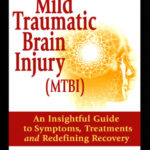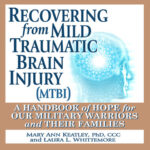The Spiritual Pathway of Brain Injury
 April 16th, 2021
April 16th, 2021Zoom with Us! 11:30am – 1:30pm (MT)
Note: Limited to the first 100 attendees. The video recording will be available for those unable to attend.
Support Interface! Donate $10 to Register…
(Click the “Add to Cart” button to register)
Then Join the Zoom meeting: https://us02web.zoom.us/j/87486296183
About The Presentation
The prevalence and aftereffects of traumatic brain injury have become clearer since the Iraq and Afghanistan wars. In truth, someone sustains a traumatic brain injury every 90 seconds in the United States (2.8 million people annually). Approximately 80% of these injuries are considered mild to moderate. Many of these individuals leave the emergency room without information on the myriad of symptoms they may expect, or treatments available to them following the injury. Unnecessary suffering follows without adequate treatment. From an emotional standpoint they often confront an existential crisis. The psychological devastation has been labeled “a Shaken Sense of Self” by Thomas Kay, et. al. as early as 1992 (“Toward a neuropsychological model of functional disability after mild traumatic brain injury”). Individuals report that they are not who they were before, and they don’t know how to find out who they are now. Because the injury is invisible to those around them people advise them to “get over it and get back to work.” Although the external signs of the injury are not always visible, and CT scans and MRI’s are normal; the individual manifests guilt, shame, anxiety depression, and a myriad of emotional aftereffects.
This presentation will provide information on brainwave states (particularly Theta 4-7 Hz) known as “hypnogogia” which occurs after brain injury and causes the individual to function in states between wakefulness and sleep.This “cloudy feeling,” may result in creativity and spiritual awakening. TBI frequently causes extremes in sound and light sensitivity, which contributes to isolation as well. In addition to not being able to tolerate external stimuli, clients feel they can pick up moods of others in their environment (anger, fear, etc.); and some actually report reading the thoughts of others. Being in such a free-floating world for a period of time causes many individuals to turn to spirituality or religion to help ground them through this time.
We will discuss an informational study I performed many years ago. When individuals came to the end of their treatment, I asked them 2 questions:
- If you had the opportunity to re-live this event (time of your life due to brain injury), would you do it again?
- What do you believe the purpose or reason for your brain injury was?
Many survivors believed that the injury was a pathway to spiritual growth and understanding for meaning in their lives. We will discuss clinical examples and ways to explain to clients the concept of frequencies in the body and brain (e.g. nerve conduction; EEG brain waves); to help normalize the process of recovery and spiritual and religious experiences accessed through creativity, (art, writing, dancing, psychotherapy, etc.) to expand their understanding of the synchronicities and gifts of the injury.
About the Presenter
Dr. Mary Ann Keatley has a Ph.D., in Speech-Language Pathology and is Board Certified in Biofeedback and Neurofeedback. She specializes in the rehabilitation of neurocognitive functioning and communication. She has practiced for over 43 years, working in hospitals and rehabilitation centers; and is currently in private practice. She worked at St. Joseph’s Hospital in Denver before becoming the Director of Speech-Language Pathology, and later the Clinical Director of Physical Medicine and Rehabilitation at Boulder Memorial Hospital for 13 years. Dr. Keatley has lectured and published widely in the fields of neurorehabilitation, brain injury and medical outcomes management, including two books on traumatic brain injury Understanding Mild Traumatic Brain Injury and Recovering from Mild Traumatic Brain Injury.
Additional Resources
CLICK HERE to watch the recording of this presentation on the Interface Youtube Channel
Download PowerPoint Slides from this presentation: SPIRITUAL PATHWAY OF BRAIN INJURY POWER POINT SLIDES:
www.braininjuryhopefoundation.org
Recovering from Mild Traumatic Brain Injury (MTBI): A Handbook of Hope for Our Military Warriors and Their Families

Understanding Mild Traumatic Brain Injury (MTBI): An Insightful Guide to Symptoms, Treatments, and Redefining Recovery
References and Resources:
Abrams, Michael. The Evolution Angel (200) Abundance Media.
Amen, Daniel G., (1996) Change Your Brain, Change Your Life. (Revised and Expanded): The Breakthrough Program for Conquering Anxiety, Depression, Obsessiveness, Lack of Focus, Anger, and Memory Problems. (2015). Harmony.
Begley, Sharon. (2007) Train Your Mind, Change Your Brain: How a New Science Reveals Our Extraordinary Potential to Transform Ourselves. Ballantine Books.
Bennett, C, Gupta1, R. K., Prabhakar, P., Christopher, R. Sampath, S., Thennarasu, K. Rajeswaran, J. (2017) Clinical and Biochemical Outcomes Following EEG Neurofeedback Training in Traumatic Brain Injury in the Context of Spontaneous Recovery. Clinical EEG and Neuroscience, 1-8.
Corona, Catherine. (2003). Loving: Taping Your Spiritual Source. Bentlight Media
Dalai,Lama, Desmond Tutu, Abrams, Douglas Carlton (2016) The Book of Joy: Lasting Happiness in a Changing World. Random House.
Gray SN. An Overview of the Use of Neurofeedback Biofeedback for the Treatment of Symptoms of Traumatic Brain Injury in Military and Civilian Populations. Med Acupunct. 2017;29(4):215-219. doi:10.1089/acu.2017.1220
Keatley, M.A., Ph.D., Whittemore, L. (2010) Understanding Mild Traumatic Brain Injury: An Insightful Guide to Symptoms, Treatments, and Redefining Recovery. Clear Focus Press
May G, Benson R, Balon R, Boutros N. Neurofeedback and traumatic brain injury: A literature review. Ann Clin Psychiatry. 2013;25(4):289–296 [PubMed] [Google Scholar]
McInnes K, Friesen CL, MacKenzie DE, Westwood DA, Boe SG. Mild Traumatic Brain Injury (mTBI) and chronic cognitive impairment: A scoping review. PLoS One. 2017 Apr 11;12(4):e0174847. doi: 10.1371/journal.pone.0174847
Mild Traumatic Brain Injury Committee, Head Injury Interdisciplinary Special Interest Group, American Congress of Rehabilitation Medicine. Definition of mild traumatic brain injury. Journal of Head Trauma Rehabilitation. 1993;8(3):86–88. [Google Scholar]
Peirce, Elizabeth. (2019) Lost And Found: Recovering Your Spirit After A Concussion.
Robbins, Jim. A Symphony in the Brain: The Evolution of the New Brainwave Biofeedback. (2014) Grove Press.
Thatcher, R. (2000). EEG operant conditioning (biofeedback) and traumatic brain injury. Clinical Electroencephalography, 31, 38-44.
https://journals.sagepub.com/doi/abs/10.1177/155005940003100110
Walsch, Neale Donald. Conversations with God: An Uncommon Dialogue, Book 1. (1996). G.P. Putnam’s Sons.
Weiss, Brian L., MD (1988) Many Lives, Many Masters: The True Story of a Prominent Psychiatrist, His Young Patient, and the Past-Life Therapy That Changed Both Their Lives. Fireside.
RESOURCES:
Caritas Consciousness Project: [email protected]
International Association for Near Death Experiences (IANDS): [email protected] via gmail.mcsv.net
Sounds True: https://www.soundstrue.com

